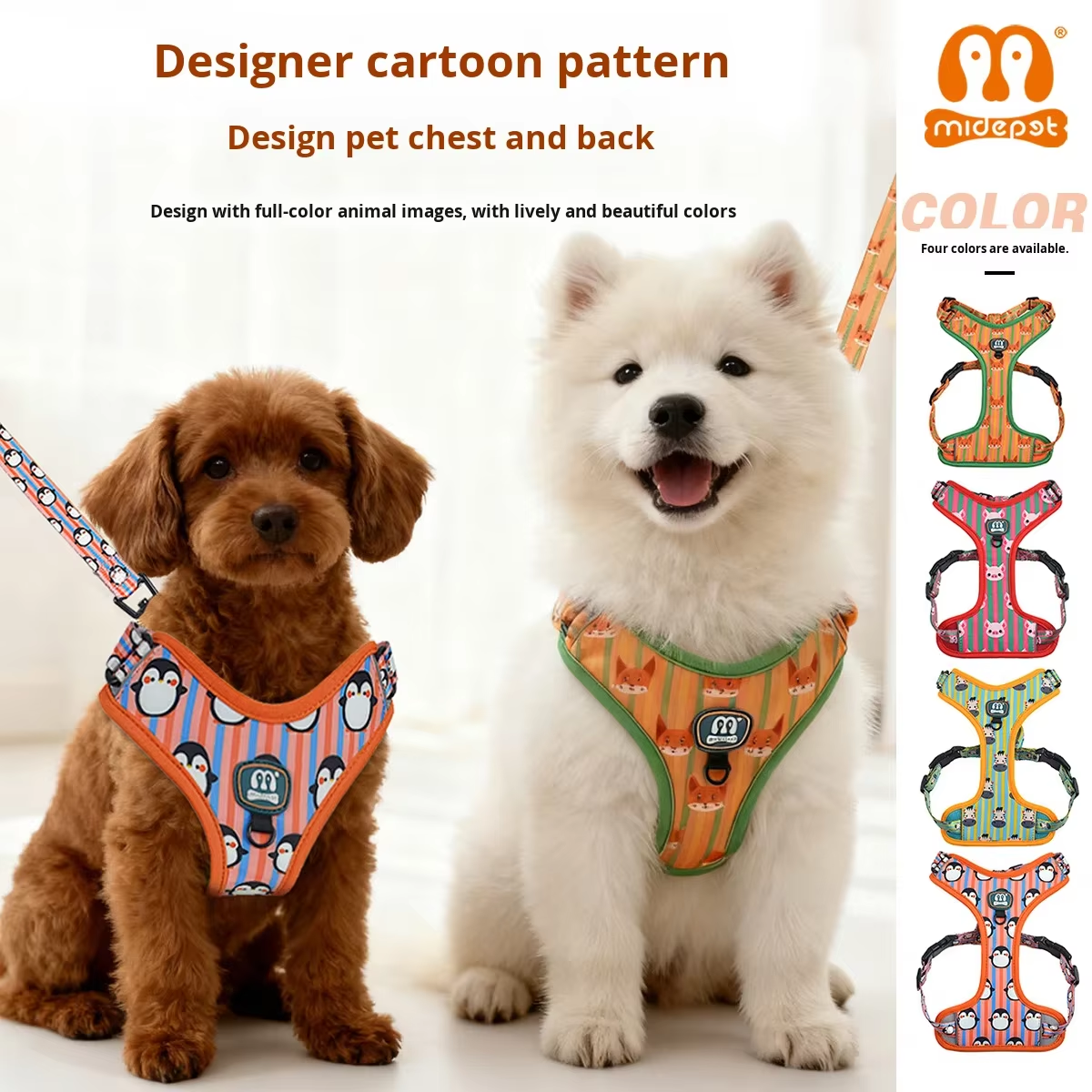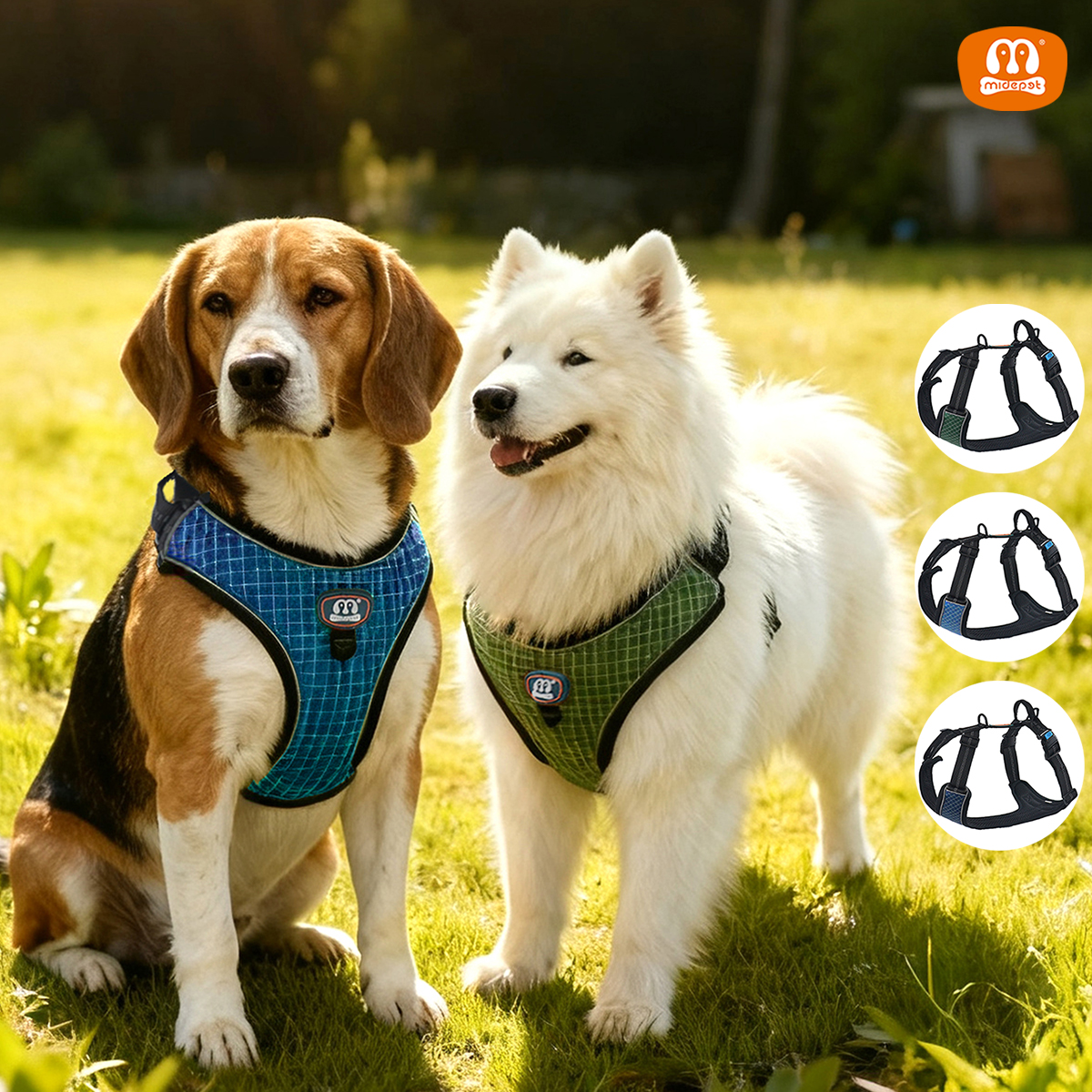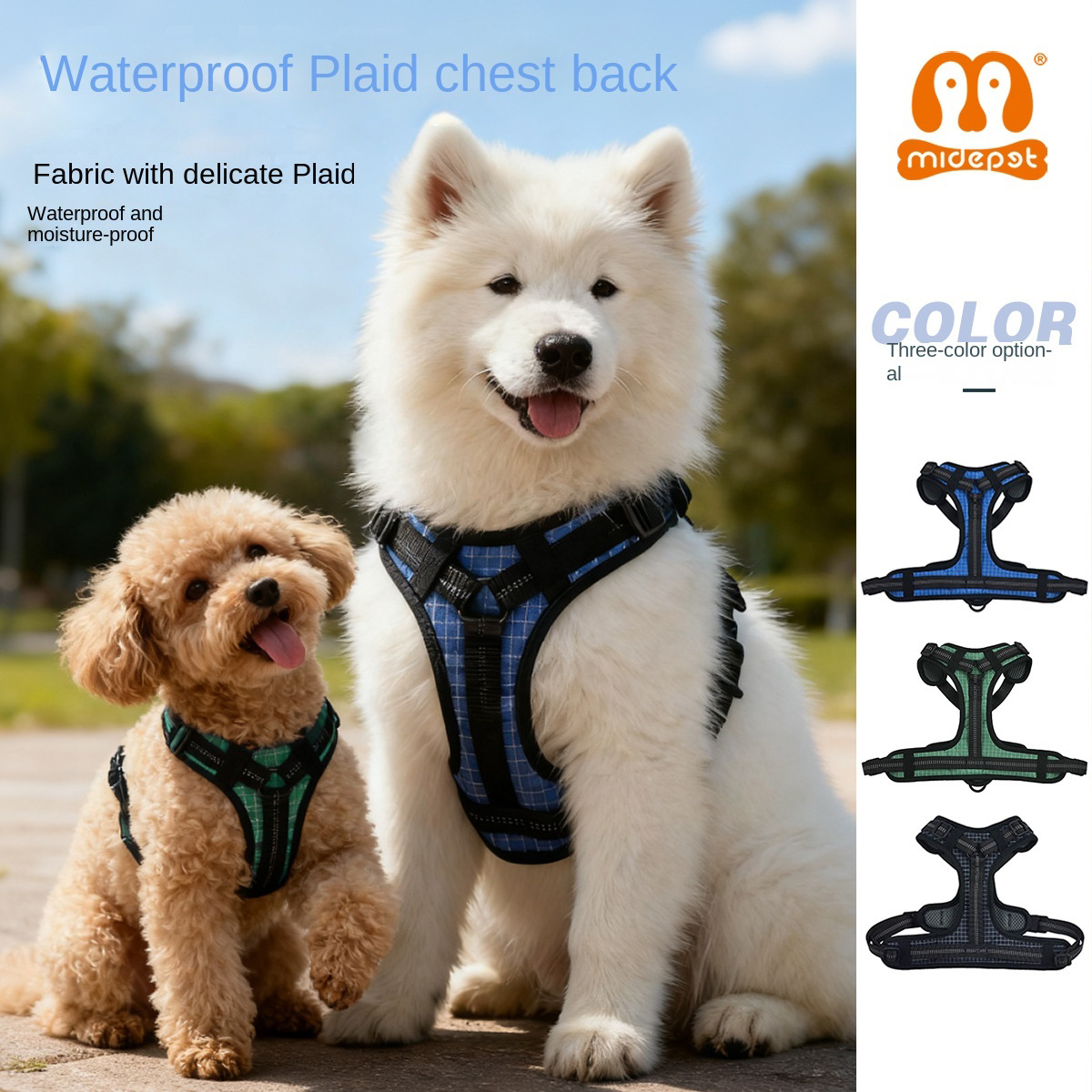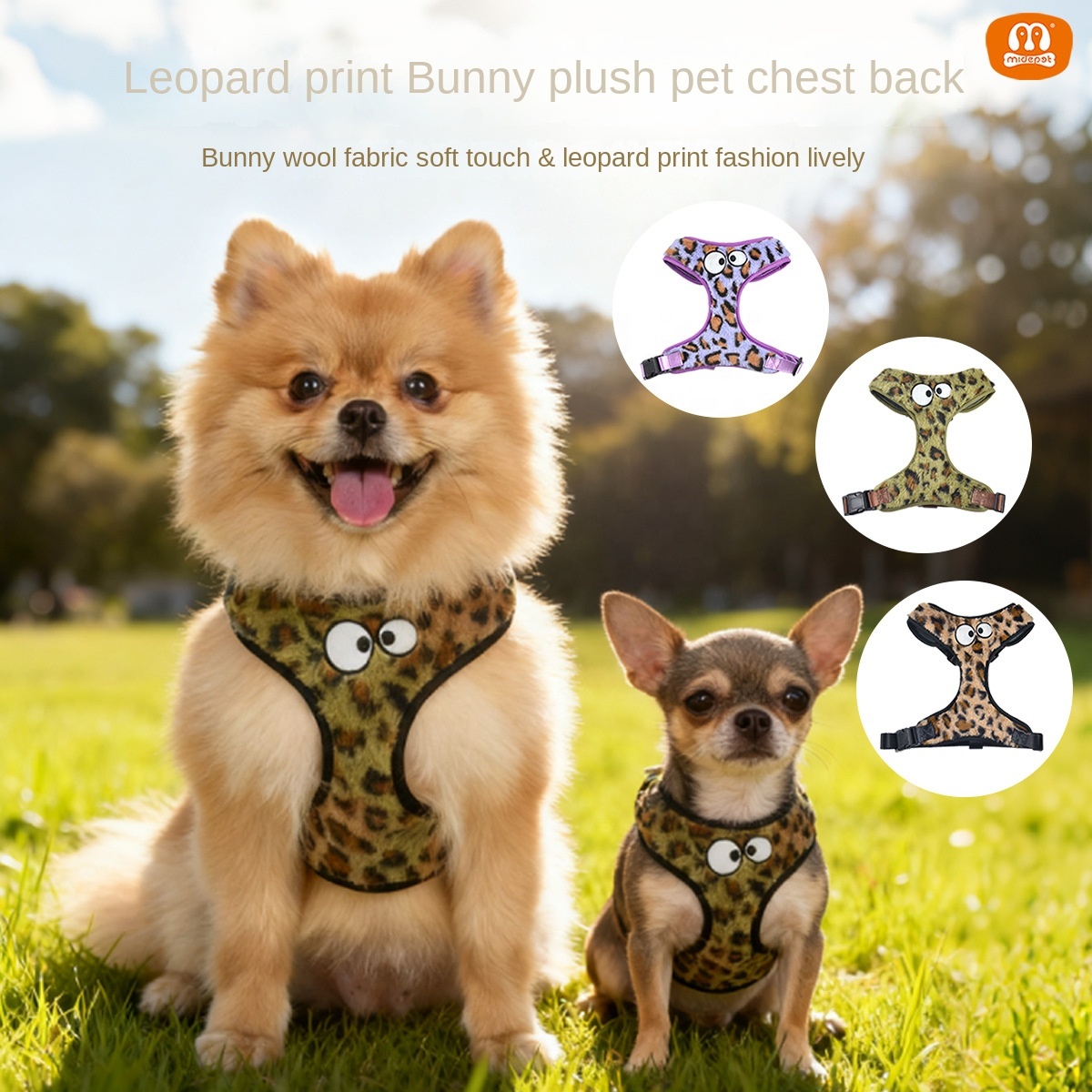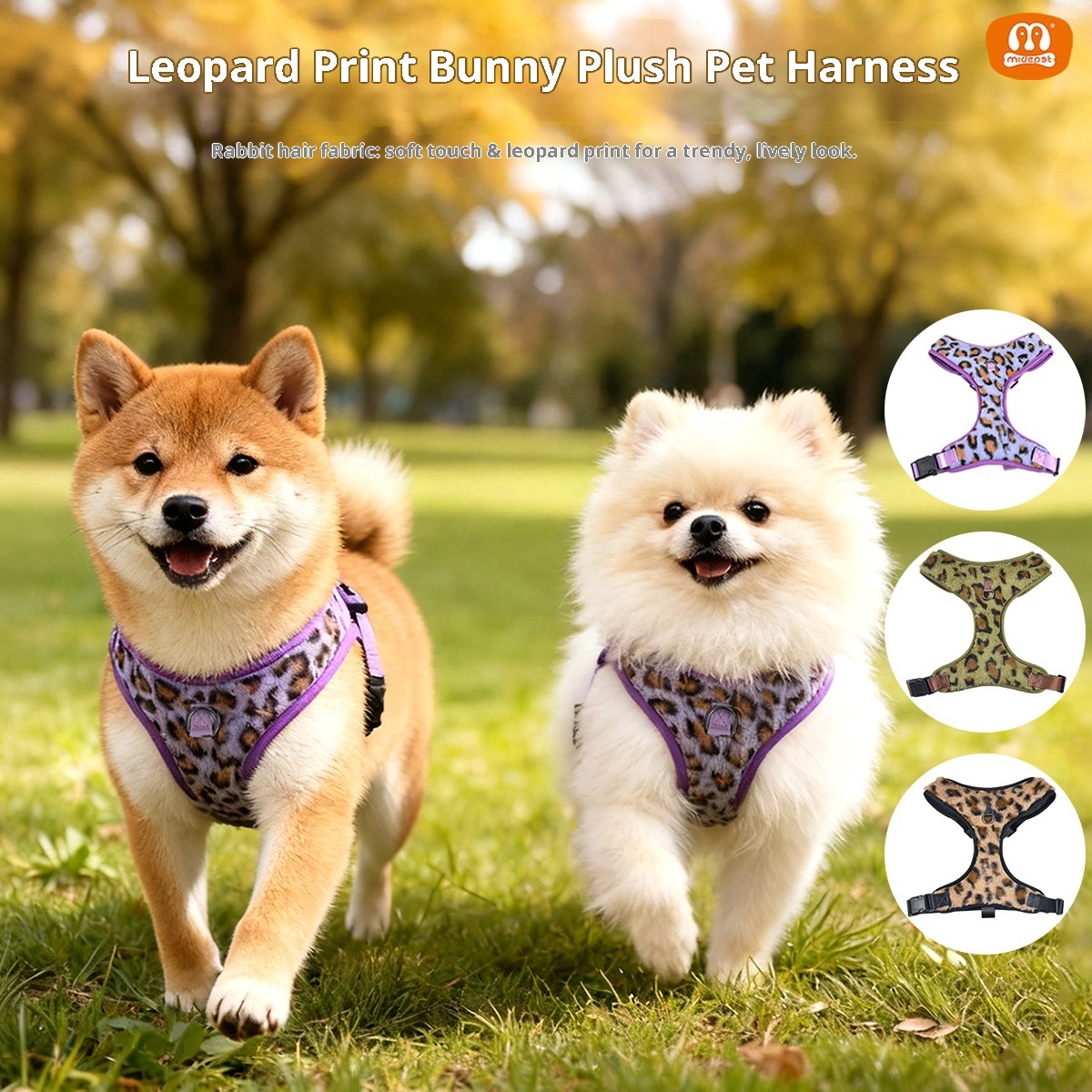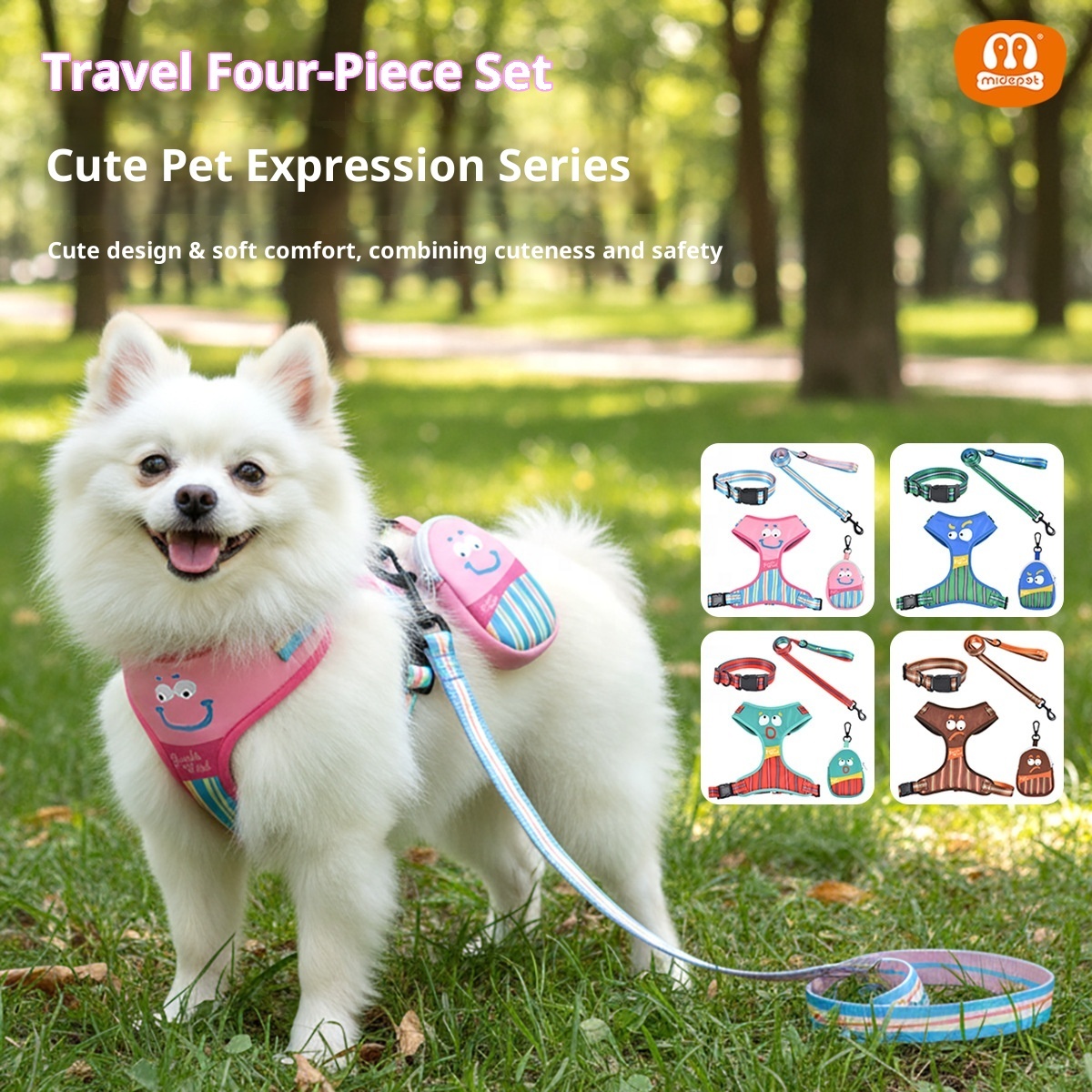Can a Dog Wear a Harness All the Time
Can a Dog Wear a Harness All the Time? A Comprehensive Guide
Introduction
In modern pet care, a dog's safety and comfort is one of the top concerns of every dog owner. As pet care concepts continue to evolve, many dog owners have begun to consider having their dogs wear harnesses around the clock in order to ensure their safety and comfort at all times. harnesses not only provide extra control, but are also effective in minimizing stress on the neck, but the suitability of wearing them throughout the day is a topic worth exploring. This article aims to fully explore the pros and cons of wearing a harness all day for your dog and provide expert advice to help dog owners make an informed decision.
Basic information about harness
Definition of harness
A dog harness is a strap that wraps around a dog's chest and is designed to distribute the pulling force and avoid putting too much pressure on the dog's neck. Unlike traditional collars, a harness distributes traction more evenly and reduces injuries caused by pulling. harnesses are designed to improve the owner's control over the dog while ensuring the dog's comfort.
Types of Harness
H-Harness
H-harnesses are named after the letter "H" in their design, and usually consist of two straps that wrap around the dog's chest and abdomen, connected by a single strap. This type of harness usually consists of two straps that wrap around the dog's chest and abdomen and are connected by a single strap.The advantage of the Harness is that it is simple and easy to adjust, making it suitable for most dogs.

Harness Vests
The Harness Vest is a more extensive type of harness that wraps around the dog's body like an undershirt. The advantage of this type of harness is that it distributes the pulling force evenly, making it ideal for dogs that need extra protection.

No pull dog harness
The no pull harness is designed to reduce pulling behavior. These harnesses often come with special designs, such as front chest loops or additional adjustable straps, to help correct pulling behavior.
Uses for harnesses

Daily walks
Harnesses can improve comfort on daily walks, reduce stress on your dog's neck, and allow your dog to be more comfortable on walks.
Training
During dog training, harness provides additional control to help owners better guide their dogs, especially during the training phase when harness can effectively reduce pulling behavior.
Traveling Safety
For dogs that travel frequently, harness can provide better safety, especially in car travel, harness can help to fix the dog's position to avoid sudden movement.
Benefits of wearing Harness throughout the day
Increased control
Wearing a Harness all day long can increase control over your dog, as it is designed to disperse the pulling force and prevent your dog from pulling violently during walks, thus giving you more control over your dog's movements. Additionally, the control ring and adjustable strap on the Harness helps owners control their dog's direction and speed more accurately.
Neck Protection
The Harness provides better neck protection than traditional collars. Collars put direct pressure on the neck when the dog pulls, which can lead to cervical spine injuries or tracheal compression. The harness spreads the pulling force over the dog's chest and shoulders, reducing the pressure on the neck and thus reducing the risk of injury.
Reduces pulling stress
For dogs that are accustomed to pulling, the Harness is effective in reducing stress on the neck. Especially for dogs that are prone to pulling, the harness design can help correct this behavior, thus reducing the strain on the neck. At the same time, the harness design also helps to improve comfort for dogs who may experience discomfort from wearing the collar for extended periods of time.
Improved Visibility
Many harness designs come with reflective materials or bright colors that make the dog more visible during nighttime walks. Reflective harnesses increase your dog's visibility, making them safer to walk at night. This is especially important for nighttime walks in urban environments, reducing the risk of traffic accidents.

Potential problems with wearing harness all day
Skin irritation and discomfort
Wearing Harness for extended periods of time may cause irritation or discomfort on your dog's skin. Especially for dogs with sensitive skin, the friction of the Harness may cause rashes or redness. Therefore, it is important to choose a harness that is breathable and made of soft material to minimize the occurrence of skin problems.
Restrictive Feeling
Some dogs may feel uncomfortable wearing a harness for a long period of time, especially those who are used to moving around freely, and the constrictive feeling of a harness may trigger anxiety or even affect their behavior. Therefore, choosing the right harness and making appropriate adjustments to ensure comfort is key to avoiding this problem.
Cleaning and Maintenance
Wearing harness throughout the day requires regular cleaning and maintenance. harness may accumulate dirt, sweat and other impurities during use, which may negatively affect your dog's skin health. Therefore, regular cleaning of the harness and checking for wear and tear or damage are essential steps in keeping the harness in good condition.
Adaptation Issues
A dog's adaptation to wearing a harness throughout the day varies from individual to individual. Some dogs may take time to adjust to the new way of wearing the harness, while others may accept it quickly. Therefore, gradual acclimatization and observing your dog's reaction is important to ensure that harness use does not trigger negative effects.

How to choose and adjust harness
Choosing the right Harness
Choosing the right harness is key to ensuring your dog's comfort. Choose the right type of Harness for your dog's size, activity needs and skin condition. For example, a larger dog may need a firmer harness, while a dog with sensitive skin will need a softer harness.
Proper Harness Adjustment
Adjusting the harness correctly will ensure your dog's comfort, as the harness should fit your dog's body, but not be too tight. Adjustment prevents excessive rubbing on the dog's skin and ensures that the harness does not interfere with the dog's movement.
Regular Inspection
Regular inspection of the harness for wear and tear is necessary. Over time, harness may become worn or loose, affecting its function and comfort. Regularly checking the condition of the harness and adjusting or replacing it as needed is key to keeping the harness effective.

How long a day is healthy for a dog to wear harness?
1. Daily walks
Recommended time: 30 minutes to 1 hour per walk, 1 or 2 times per day.
Note: For most dogs, a walk with Harness is usually between 30 minutes and 1 hour. This time ensures that your dog gets enough exercise and the Harness provides the necessary control. One or two walks per day should be sufficient to meet your dog's daily activity needs and should not be worn for too long as it may cause skin irritation or discomfort.
2. During training
Recommended Time: 15 to 30 minutes per session, 1 to 2 times per day.
Description: Wearing Harness provides additional control and support during training. The training time should not be so long as to make the dog tired or uncomfortable. Usually, each training session lasts about 15 to 30 minutes, depending on the intensity of the training and the dog's adaptation. After completing the training, it is recommended to let the dog rest and remove the Harness to ensure comfort.
3. Long Outings or Trips
Recommended Time: Wear Harness for up to 4 hours per outing or trip.
Note: Harnesses can provide extra security for extended periods of time away from home or traveling. However, it is recommended that you stop every 4 hours or so to rest and remove the Harness to allow your dog to relax and get comfortable. For longer trips, consider taking a spare Harness with you so that it can be changed and cleaned in a timely manner.
4. At home or when resting
Recommended Time: It is not recommended to wear Harness.
Instructions: It is recommended that Harness be removed when at home or resting. Allow your dog to move freely during this time to avoid skin problems or discomfort caused by wearing Harness for a long period of time. Allowing your dog to rest in a comfortable environment will help improve his overall health and well-being.
5. Special circumstances (e.g. illness or recovery from surgery)
Recommended Timing: Based on veterinary advice.
Note: For dogs with special health concerns, such as skin conditions or post-surgical recovery, the time to wear Harness should be adjusted according to your veterinarian's recommendations. Ensure that you choose the right type of Harness and check your dog's skin condition regularly to ensure comfort and health.

If you need to wear it for a long period of time, what types of harnesses are the least harmful to your dog?
1. Breathable Harness
Recommended type: Mesh Harness or Breathable Harness.
Description: Breathable harnesses help minimize skin irritation and discomfort. For example, a mesh fabric harness provides good ventilation, reducing heat buildup and moisture while the dog is wearing it.
2. Adjustable Harnesses
Recommended: Harnesses with multiple points of adjustment.
Description: Adjustable Harnesses ensure that your dog's Harness fits properly and avoids discomfort caused by improper fit. Adjustable Harnesses can be fine-tuned to fit your dog's size, providing better fit and comfort.
3. Soft and comfortable material
Recommended: Harnesses made of soft materials such as cotton or soft synthetic materials.
Description: Soft, comfortable materials reduce friction and irritation on your dog's skin. Choosing a harness made of this type of material will help to improve the comfort of the harness, especially for dogs with sensitive skin.
With these specific wear time recommendations and Harness selection tips, dog owners can better manage their dog's Harness wear time to ensure their dog's comfort and health. If there are any questions or special circumstances, it is recommended to consult your veterinarian for personalized advice.

Alternatives and recommendations for use
Suitability of collars
There are some situations in which a collar may be more appropriate for use than a harness. For example, a collar may be more convenient for a dog that has become accustomed to wearing a collar, or when moving around the home. Collars are also suitable for dogs that are not prone to pulling, and can provide basic identification and tugging.
Recommendations for short periods of time
For situations where the Harness needs to be worn for short periods of time, such as short walks or training, the appropriate Harness can be selected for wear. However, for extended periods of wear, it is recommended that the harness be removed periodically to allow the dog to get the necessary rest and relaxation.
Consult your veterinarian
When deciding whether or not to allow your dog to wear a Harness all day, consult your veterinarian.


